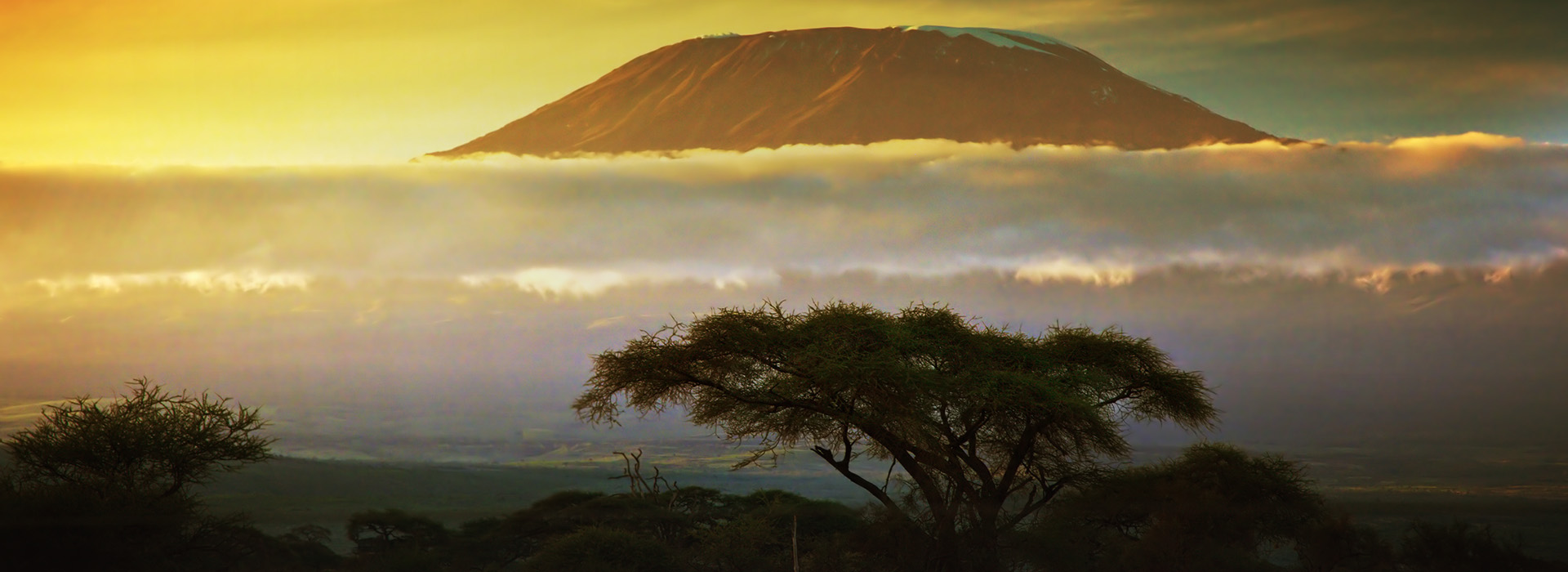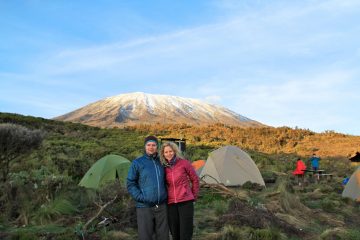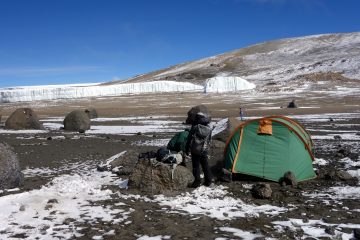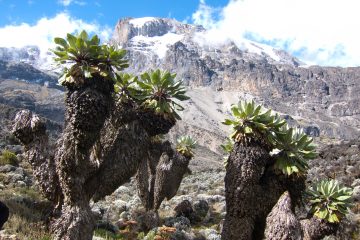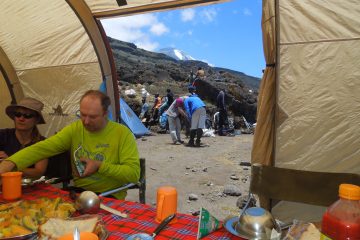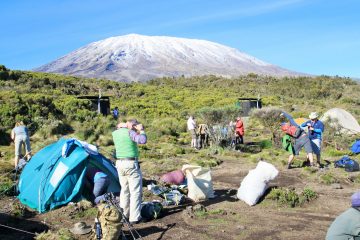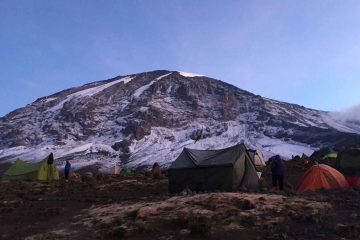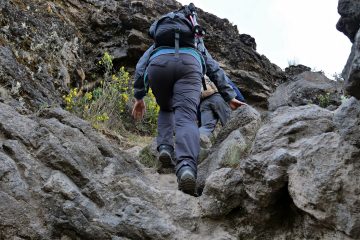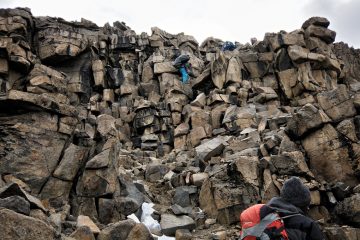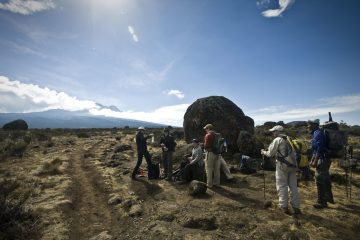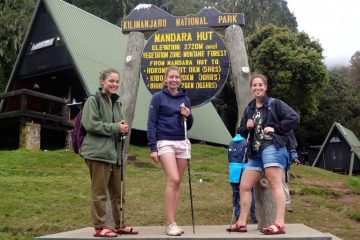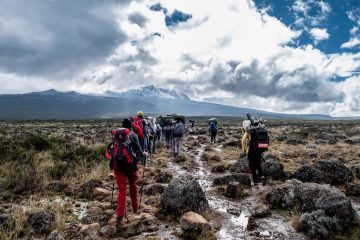Mount Kilimanjaro is Africa’s highest peak, standing at a lofty elevation of 5,895 meters (19,341 feet) to the North of Tanzania. Every year, about 35,000 people in approximation attempt to reach the summit of Uhuru Peak, which is often regarded as one of the more approachable big-mountain treks otherwise known as the 7 summits of the world. the seven summits consist of the tallest mountain from each continent in the world.
The fact that Mount Kilimanjaro is the highest mountain in Africa and the highest free-standing mountain in the world is amazing. below are some interesting facts about this record-breaking mountain in Tanzania, Africa.
Climbing Mount Kilimanjaro
While the climb to Kilimanjaro’s summit isn’t easy, you’ll be rewarded with seemingly endless views of Mawenzi’s jagged peaks, the Shira plateau, and a birds eye view of Tanzania’s and Kenya’s distant horizons below. We can also arrange for you to climb with the best, most experienced guides to ensure that you reach the summit safely.
Kilimanjaro is a natural wonder: a snow-capped mountain on the Equator, it has five unique climatic zones, each with its own vegetation. Climbing the mountain seems like a week-long trip through four seasons. Because of the high altitude, unusual life forms such as the alien-looking giant groundsel plant and the delicate elephant flower have thrived.
You may have seen media coverage of a number of celebrities who have summited Kilimanjaro, or you may personally know someone who has. The peak draws both novice and expert mountain hikers due to its non-technical nature and ease of ascent among the Seven Summits.
However, it’s critical to recognize that reaching the top shouldn’t be taken for granted. Because of its height, Kilimanjaro is climbed fast, which might result in altitude sickness and tiredness. It is critical to have the best possible guides and porters if you want to succeed in reaching the top.
Altitude and Size
- Kilimanjaro stands at a height is 5895 m or 19,340 ft tall
- The exact altitude of Kilimanjaro as measured accurately in the year 2008 is 5891.8 m or 19,330 ft.
- Kilimanjaro is the highest freestanding mountain in the world. It stands at a height of 4877 m above the neighbouring plains.
- It measures up to 40 km across.
- The base extends to an area of about 388,500 hectares.
Geography/Location
- Mount Kilimanjaro is located in Tanzania, a country on the East African side of Africa. It lies near the border of Kenya and Tanzania but within Tanzania.
- The whole area lies between 2° 45′ to 3° 25’S and 37° 00′ to 37° 43’E (not far south of the equator).
Population
- The area surrounding Kilimanjaro is densely populated.
- The native people that live on Kilimanjaro and its surroundings are the Chagga tribe
Geology
- Kilimanjaro is a gigantic stratovolcano.
- Kilimanjaro is a dormant volcano, the time it last erupted is not yet enough to declare it extinct.
- It is the largest volcano in the east-west belt of volcanoes. Located in Northern Tanzania.
- Then the formation of Mount Kilimanjaro began around 750,000 years back.
- Kili has three main volcanic peaks (Shira, Mawenzi and Kibo) and a number of smaller parasitic cones.
- Shira is the oldest peak on the mountain while Kibo peak is the latest
- Kilimanjaro’s last major volcanic activity was in the past 360,000 years when Kibo erupted.
- The latest Mount Kilimanjaro volcanic activity happened about 200 years back and it formed the Ash pit that is present even today.
- Kibo has two concentric craters, 1.9 x 2.7 km and 1.3 km in diameter, respectively.
- The central ash pit measures 350 m deep.
- Uhuru Peak is the highest point on Mount Kilimanjaro as well as the whole of Africa.
- Since 1912 82% of Mount Kilimanjaro’s ice cap has diminished.
- Since 1962, about 55% of Kilimanjaro’s glaciers have vanished.
- This may be a strong indication of global warming or perhaps due to the loss of humidity caused by deforestation and clearing for farms.
- Today, the total glacier area is roughly 2.5 km2.
- The latest prediction foretells that Mount Kilimanjaro may lose the plateau ice within the next 30-40 years, but it may retain the sloping ice for a while.
Climate
- There are two rainy or wet seasons, during the months of November to December and March to May.
- The driest times of the year are the months of August to October.
- Rainfall decreases rapidly the higher you go up the mountain.
- 96% of all rain on Kilimanjaro falls below 3000 m.
- The mean rainfall per annum at the Marangu Gate (start of Marangu route) is 2300 mm.
- Above 4500 m the conditions are semi-arid and desert-like.
- The mean rainfall per annum at Kibo Huts (highest hut on Marangu route) is below 200 mm.
- The northern side of the mountain is a lot drier than the southern side.
- The months of January to March are the warmest months. Read about the best time to climb
Vegetation Zones
- There are five main vegetation zones on Mount Kilimanjaro:
- Savanna bushland zone (700-1000 m on the southern side and 1400-1600 m on the northern side),
- Sub-montane agro-forest zone (the largely populated farmlands and plantations to the south and south-east)
- Montane forest zone (the rainforest, from 1300 m to 2800 m on the southern side, above 1600 m on the drier northern side)
- Sub-alpine moorland and alpine bogs (the heath and moorland, 2800-4000 m)
- Above this is the alpine desert zone.
Animals
- Kilimanjaro is home to 140 species of mammals (87 forest species). Species include 7 primates, 25 carnivores, 25 antelopes and 24 bat species.
- At least seven larger mammal species live above the tree line, these include species of Kilimanjaro tree hyrax, grey duiker, red duiker, eland, bushbuck, buffalo and elephants.
- Three primate species inhabit the montane forests: blue monkey, black and white colobus Colobus monkey and bushbaby.
- 179 species of birds also call Kilimanjaro home.
Kilimanjaro National Park
- The size of the national park is 75,353 hectares
- The size of the forest reserve encircling Mount Kilimanjaro is 107,828 hectares
- Kilimanjaro national park, the mountain, and its forests were declared a game reserve in the year 1910 by the German colonial government.
- In 1921 the area was gazetted as a Forest Reserve and in 1973 the mountain above the tree line (2700m) was categorized as a national park.
- The Kilimanjaro national park also conserves and protects some of the montane forests, and six access corridors through the forest belt below.
- Kilimanjaro National Park was officially open to the public in 1977.
- In 1987 the park was declared a World Heritage Site for its natural value.
- The park is under the Tanzania National Parks Authority.
- The Kilimanjaro coordinates lie at 2°45′-3°25’S, 37°00′-37°43’E.

